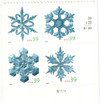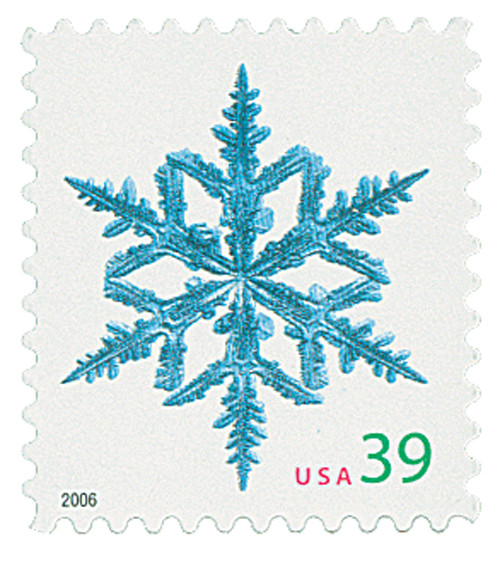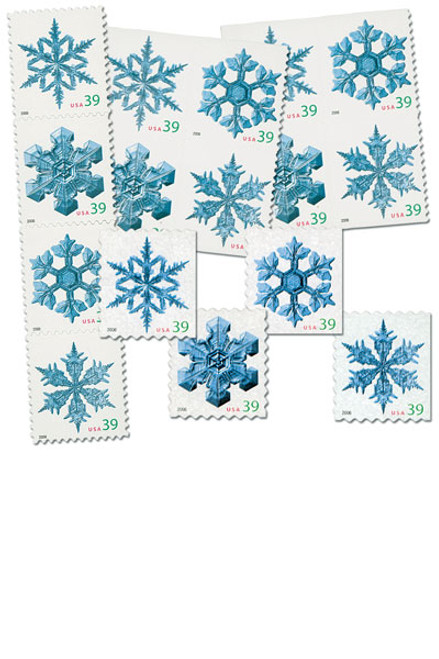
2006 39c Contemporary Christmas: Holiday Snowflakes
# 4101-04 - 2006 39c Contemporary Christmas: Holiday Snowflakes
MSRP:
Was:
Now:
$1.60 - $30.00
(You save
)
Write a Review

Write a Review

4101-04 - 2006 39c Contemporary Christmas: Holiday Snowflakes
| Image | Condition | Price | Qty | |
|---|---|---|---|---|

|
Fleetwood First Day Cover
ⓘ
Ships in 1-3 business days.
Ships in 1-3 business days.
$ 3.95
|
$ 3.95 |
|
0
|

|
Fleetwood First Day Cover Set
ⓘ
Ships in 1-3 business days.
Ships in 1-3 business days.
$ 12.75
|
$ 12.75 |
|
1
|

|
Mystic First Day Cover Set
ⓘ
Ships in 1-3 business days.
Ships in 1-3 business days.
$ 11.75
|
$ 11.75 |
|
2
|

|
Colorano Silk First Day Cover Set
ⓘ
Ships in 1-3 business days.
Ships in 1-3 business days.
$ 10.95
|
$ 10.95 |
|
3
|

|
Classic First Day Cover
ⓘ
Ships in 1-3 business days.
Ships in 1-3 business days.
Free with 700 Points
$ 3.50
|
$ 3.50 |
|
4
|

|
Classic First Day Cover Set
ⓘ
Ships in 1-3 business days.
Ships in 1-3 business days.
Free with 1,790 Points
$ 8.95
|
$ 8.95 |
|
5
|

|
Mint Plate Block
ⓘ
Ships in 1-3 business days.
Ships in 1-3 business days.
$ 8.00
|
$ 8.00 |
|
6
|

|
Mint Stamp(s)
ⓘ
Ships in 1-3 business days.
Ships in 1-3 business days.
Free with 1,560 Points
$ 6.50
|
$ 6.50 |
|
7
|

|
Mint Sheet(s)
ⓘ
Ships in 1-3 business days.
Ships in 1-3 business days.
$ 30.00
|
$ 30.00 |
|
8
|

|
Used Single Stamp(s)
ⓘ
Ships in 1-3 business days.
Ships in 1-3 business days.
$ 1.60
|
$ 1.60 |
|
9
|
Mounts - Click Here
| Mount | Price | Qty |
|---|
U.S. #4101-04
Holiday Snowflakes
Contemporary Christmas
Holiday Snowflakes
Contemporary Christmas
Issue Date: October 5, 2006
City: New York, NY
Quantity Issued: 200,000,000
Please note: Due to the layout of the pane, the se-tenant may or may not be provided in Scott Catalogue order.
City: New York, NY
Quantity Issued: 200,000,000
Please note: Due to the layout of the pane, the se-tenant may or may not be provided in Scott Catalogue order.
Snowflakes are the subject of this holiday stamp. Snowflakes are made of 2 to 200 separate snow crystals that have formed around tiny bits of dirt in the atmosphere. No two crystals are alike. Falling snow crystals stick to one another to form snowflakes if they pass through warmer air. The average snowflake is about 0.4 inches across. The biggest snowflake reported in the U.S. measured 15 inches. It fell on January 28, 1887, at Fort Keough, Montana.

U.S. #4101-04
Holiday Snowflakes
Contemporary Christmas
Holiday Snowflakes
Contemporary Christmas
Issue Date: October 5, 2006
City: New York, NY
Quantity Issued: 200,000,000
Please note: Due to the layout of the pane, the se-tenant may or may not be provided in Scott Catalogue order.
City: New York, NY
Quantity Issued: 200,000,000
Please note: Due to the layout of the pane, the se-tenant may or may not be provided in Scott Catalogue order.
Snowflakes are the subject of this holiday stamp. Snowflakes are made of 2 to 200 separate snow crystals that have formed around tiny bits of dirt in the atmosphere. No two crystals are alike. Falling snow crystals stick to one another to form snowflakes if they pass through warmer air. The average snowflake is about 0.4 inches across. The biggest snowflake reported in the U.S. measured 15 inches. It fell on January 28, 1887, at Fort Keough, Montana.
!







